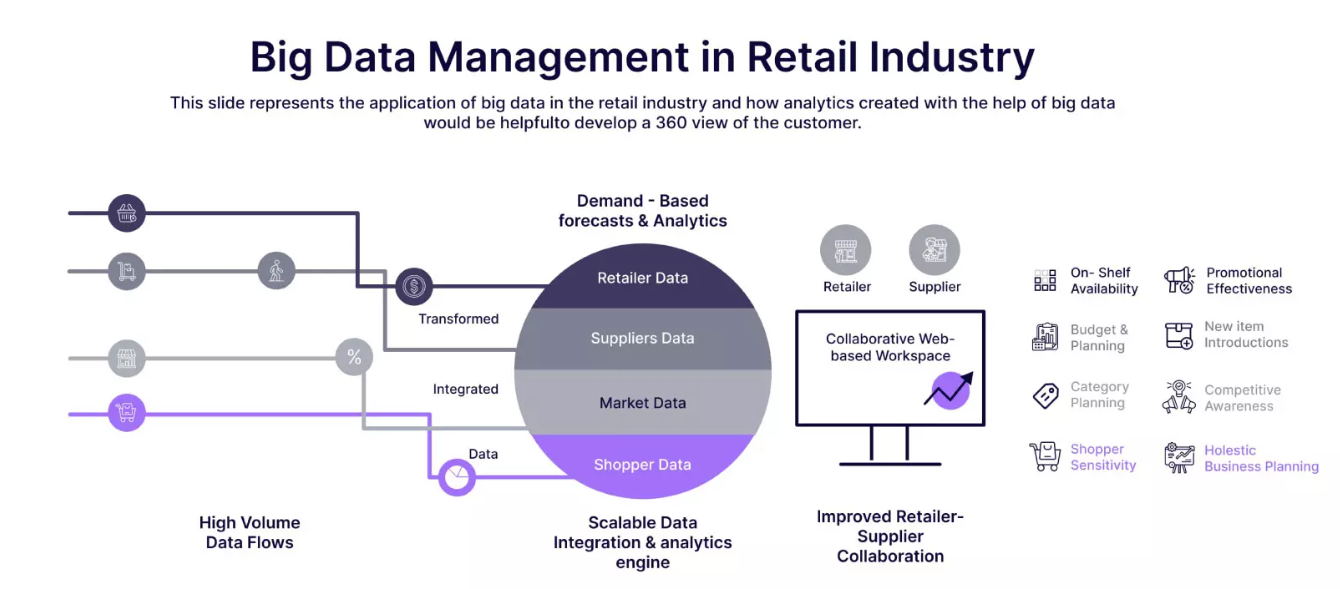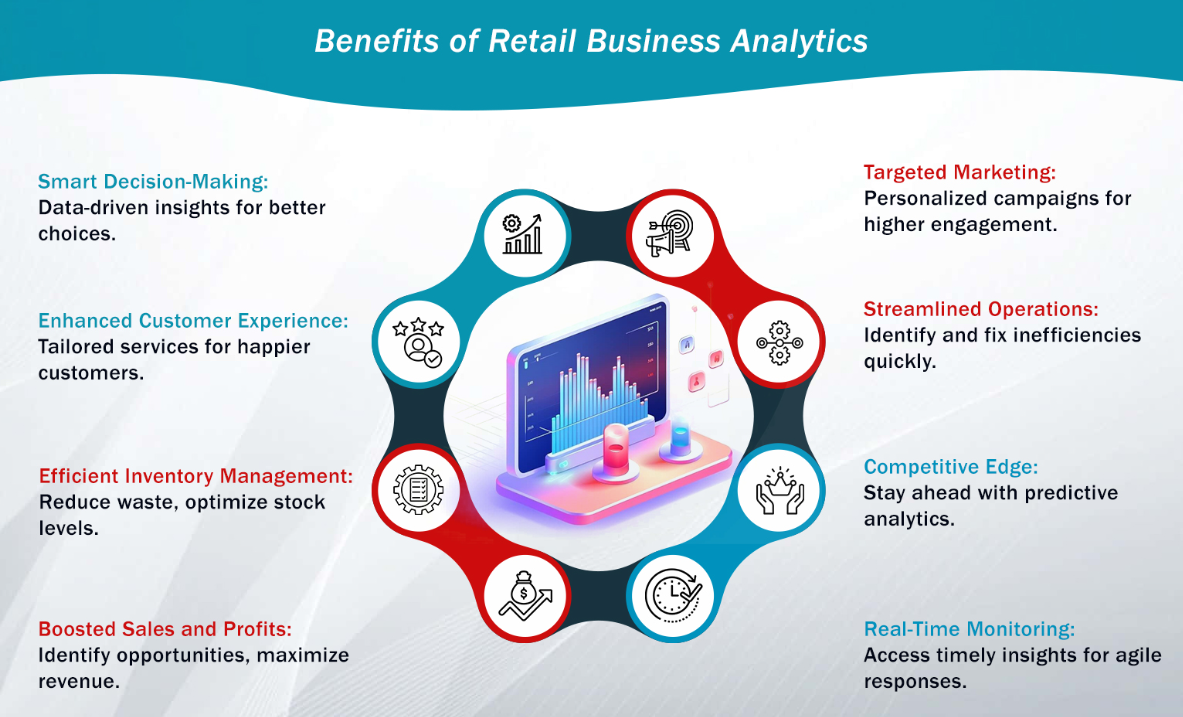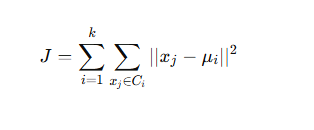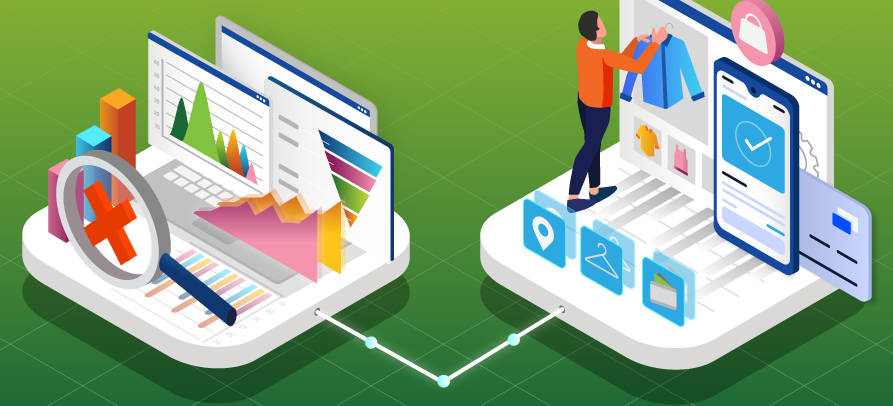Big Data in Retail – Enhancing Customer Experience Through Predictive Analytics
 Abhishek Dodda
Abhishek Dodda
Introduction
In today’s rapidly evolving retail environment, businesses are increasingly turning to Big Data and predictive analytics to stay competitive and deliver enhanced customer experiences. The ability to collect, process, and analyze vast amounts of customer data has transformed how retailers engage with consumers. Predictive analytics, powered by Big Data, helps retailers anticipate customer behavior, personalize marketing efforts, optimize inventory, and improve customer service, ultimately driving customer satisfaction and loyalty. This research note explores how Big Data and predictive analytics are reshaping the retail sector and enhancing the customer experience.
The Role of Big Data in Retail
Big Data refers to the enormous volume of structured and unstructured data generated by consumers, businesses, and devices. In the retail context, Big Data encompasses transaction records, browsing history, social media interactions, customer reviews, in-store behavior, and even external data such as weather patterns or economic conditions. This data can be harnessed to gain valuable insights into customer preferences, buying habits, and future needs.
Retailers are adopting Big Data technologies to process and analyze these vast data sets to derive actionable insights. The challenge lies in not just collecting data but extracting meaningful patterns that drive business decisions. Predictive analytics, a branch of data analytics that uses historical data to forecast future outcomes, plays a pivotal role in transforming raw data into actionable intelligence that can significantly enhance the customer experience.

Eq.1.Customer Segmentation (Clustering)

Predictive Analytics in Retail
Predictive analytics involves using statistical algorithms, machine learning models, and data mining techniques to analyze historical data and predict future customer behavior. In retail, predictive analytics can be applied in several key areas to improve customer engagement and streamline operations.
1. Personalized Recommendations
One of the most prominent applications of predictive analytics is personalized product recommendations. Retailers like Amazon and Netflix have set the bar high in using data-driven recommendations to enhance the shopping experience. By analyzing a customer's past purchases, browsing behavior, and preferences, predictive models can suggest products that a customer is likely to purchase, increasing the chances of conversion. The recommendation engine learns and adapts based on new data, becoming more accurate over time.
For example, a clothing retailer could use predictive analytics to recommend outfits based on a customer’s style preferences, previous purchases, or even trending fashion items in their region. This level of personalization makes the shopping experience more enjoyable and increases customer retention.
2. Demand Forecasting and Inventory Optimization
Predictive analytics plays a critical role in inventory management by forecasting product demand. Retailers can analyze historical sales data, seasonality trends, customer preferences, and other external factors (such as promotions or economic changes) to predict which products will be in demand and when. This allows retailers to optimize stock levels, ensuring that popular items are readily available while minimizing the risk of overstocking slow-moving products.
Effective demand forecasting reduces costs associated with stockouts and excess inventory, ensuring that customers can always find what they want, when they want it. It also helps businesses maintain better relationships with suppliers and manage cash flow more effectively.
3. Customer Segmentation and Targeted Marketing
Predictive analytics allows retailers to segment their customers based on behavior, demographics, and purchasing patterns. By analyzing this data, retailers can identify high-value customers, predict future spending behavior, and deliver more targeted marketing campaigns. Predictive models can also help retailers uncover untapped customer segments, enabling them to tailor their marketing strategies to different groups of customers with specific needs and preferences.
For example, a retailer could create personalized email campaigns or push notifications targeting specific customer segments, such as those who frequently purchase discounted items or those who have a preference for eco-friendly products. Targeted marketing improves customer engagement and drives higher conversion rates.
4. Churn Prediction and Customer Retention
Customer churn is a significant challenge for many retailers. Predictive analytics can help identify customers who are at risk of abandoning the brand by analyzing factors such as purchase frequency, customer satisfaction, and engagement with marketing campaigns. By recognizing early signs of churn, retailers can take proactive steps to retain valuable customers, such as offering personalized discounts, loyalty rewards, or customer support interventions.
Predictive models that forecast churn can also help businesses allocate resources more effectively, ensuring that retention efforts are focused on the customers most likely to leave. This results in higher customer loyalty and longer-lasting relationships with the brand.
5. Optimizing Pricing Strategies
Dynamic pricing is another area where predictive analytics can enhance the customer experience. By analyzing historical pricing data, competitor pricing, demand trends, and customer behavior, retailers can adjust their prices in real time to maximize sales and profitability. Predictive analytics enables retailers to implement personalized pricing strategies, offering discounts or special offers to customers based on their shopping history and price sensitivity.
For instance, a retailer may offer a loyal customer a special discount on a product they have been eyeing for a while or price-match a competitor’s offer to ensure customer satisfaction. This approach enhances the customer experience by offering value while also optimizing revenue.

Eq.2.Predicting Customer Purchase Behavior (Regression)

Enhancing the In-Store Experience
While online retail has seen tremendous growth, brick-and-mortar stores remain an integral part of the retail experience. Predictive analytics, coupled with in-store technology, is helping retailers improve the physical shopping experience. By tracking in-store customer behavior through sensors, beacons, and mobile apps, retailers can gain insights into foot traffic patterns, dwell times, and product interactions. This data can be used to optimize store layouts, personalize in-store promotions, and guide customers to specific products based on their preferences.
For example, a retailer could send real-time, location-based offers to a customer’s smartphone when they are near a specific section of the store. This personalization increases the chances of purchase and creates a more engaging in-store experience.
Benefits of Predictive Analytics in Retail
The integration of predictive analytics in retail has a variety of benefits for both retailers and consumers:
Improved Customer Satisfaction: Personalized recommendations, targeted promotions, and tailored customer interactions lead to a more satisfying and seamless shopping experience.
Increased Sales and Conversion Rates: By anticipating customer needs and offering the right products at the right time, retailers can drive higher sales and improve conversion rates.
Enhanced Efficiency: Predictive analytics allows for better demand forecasting, inventory optimization, and pricing strategies, reducing operational inefficiencies.
Cost Savings: With improved inventory management and better marketing targeting, retailers can reduce waste, lower promotional costs, and avoid stockouts.
Stronger Customer Loyalty: By anticipating customer preferences and offering personalized experiences, retailers can foster long-term relationships and increase customer loyalty.
Challenges in Implementing Predictive Analytics
Despite its numerous advantages, implementing predictive analytics in retail comes with challenges:
Data Privacy and Security: Collecting and analyzing customer data raises concerns about privacy and security. Retailers must ensure that they comply with data protection regulations such as GDPR while maintaining consumer trust.
Data Quality: Predictive models rely heavily on clean, accurate data. Inaccurate or incomplete data can lead to flawed predictions and poor customer experiences.
Integration with Existing Systems: Integrating predictive analytics tools with existing retail systems can be complex and may require significant investments in technology and training.

Conclusion
Big Data and predictive analytics are revolutionizing the retail industry by allowing retailers to better understand and anticipate customer needs. Through personalized recommendations, demand forecasting, targeted marketing, and churn prediction, predictive analytics is enhancing the customer experience, driving sales, and increasing operational efficiency. While there are challenges in implementing these technologies, the benefits they offer in terms of customer satisfaction, loyalty, and profitability are undeniable. As technology continues to evolve, the role of predictive analytics in retail will only grow, enabling retailers to deliver even more personalized, efficient, and enjoyable shopping experiences.
Subscribe to my newsletter
Read articles from Abhishek Dodda directly inside your inbox. Subscribe to the newsletter, and don't miss out.
Written by
